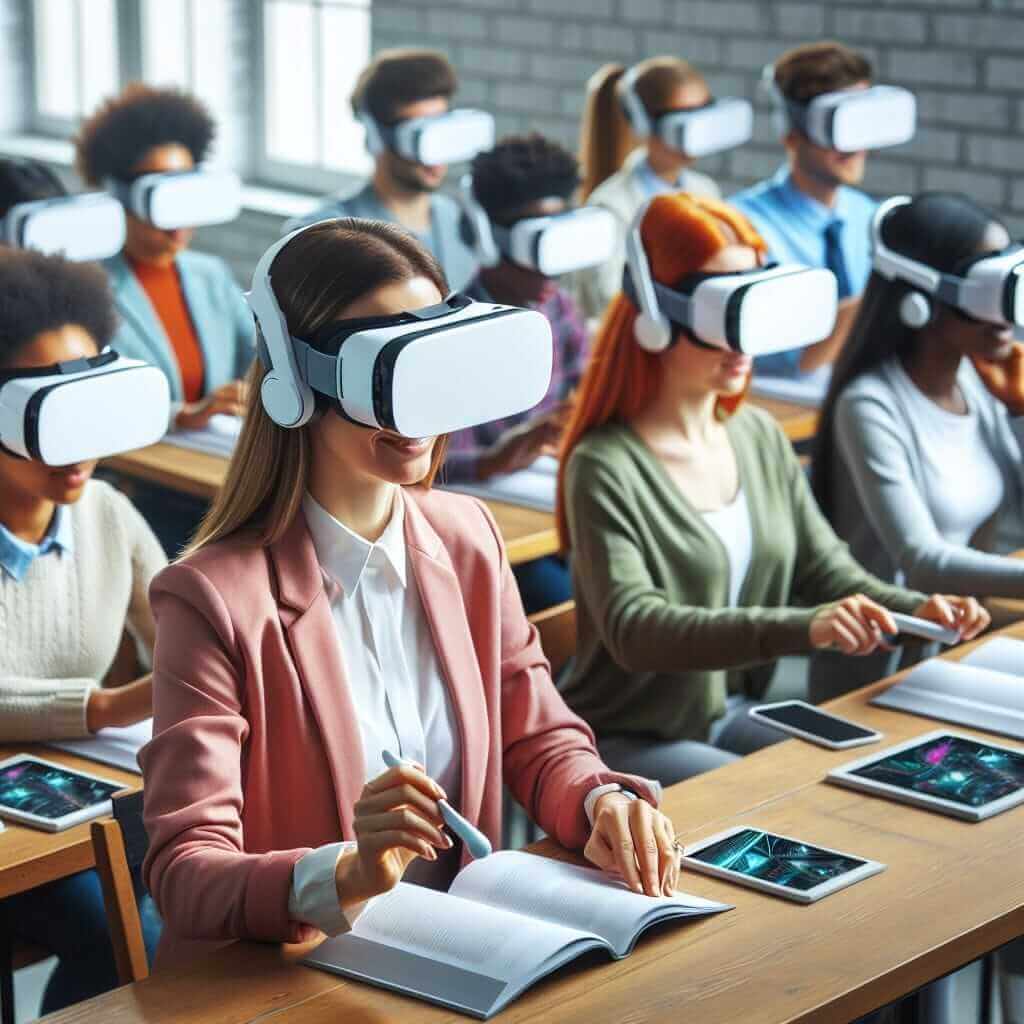The IELTS Reading section evaluates a candidate’s ability to understand written texts accurately in a timed environment. The topic of virtual reality (VR) in education has gained significant traction, making it a potentially recurring subject in the IELTS Reading test. This article will provide a detailed practice reading test on “The Implications of Virtual Reality in Education,” along with relevant vocabulary, grammar tips, and answer explanations to help you prepare effectively.
Practice Reading Test: Virtual Reality in Education
Reading Passage: Virtual Reality in Education
Virtual Reality (VR) has gradually permeated various industries, with education being one of the most promising fields of application. By integrating VR into educational settings, immersive learning experiences once considered science fiction are now a reality. This paradigm shift offers multiple benefits and poses several implications for the traditional education model.
VR enables learners to engage with content in a more interactive and engaging manner. Rather than passively absorbing information from textbooks, students can experience historical events, conduct virtual laboratory experiments, or explore the human body in 3D. These immersive experiences can enhance understanding and retention, making complex subjects comprehensible through visualization and hands-on interaction.

Moreover, VR can bridge geographical gaps, providing access to high-quality education regardless of location. Students in remote or underprivileged areas can benefit from virtual classrooms and labs, thus democratizing education. This aspect is particularly crucial in addressing educational inequalities and enhancing inclusivity.
However, the implementation of VR in education is not without challenges. The high cost of VR equipment and the need for technical expertise can be significant barriers. Schools and institutions must invest in hardware, software, and training to effectively integrate VR into their curriculum. Additionally, there are concerns about the potential health effects of prolonged VR use, including eyestrain and motion sickness.
Despite these challenges, the potential of VR to revolutionize education is undeniable. As technology evolves and becomes more accessible, it is expected that VR will play an increasingly central role in shaping the future of learning.
Questions:
Section 1: Multiple Choice
-
What is the primary benefit of using VR in education according to the passage?
a. Cost efficiency
b. Enhanced learning experiences
c. Simplified teaching methods
d. Reduction in travel time -
How does VR help in democratizing education?
a. By providing free equipment to students
b. Through virtual classrooms and labs accessible to all
c. By offering scholarships
d. By standardizing the curriculum
Section 2: True/False/Not Given
- VR enables students to passively absorb information from textbooks.
- The cost of VR equipment is a challenge for its implementation in schools.
- VR has a central role in shaping the current education system.
Section 3: Matching Headings
- Paragraph A
a. The future of VR in education
b. Challenges of VR in education
c. Introduction to VR in education - Paragraph B
a. Interactive learning experiences
b. VR and cost issues
c. Health concerns related to VR - Paragraph C
a. Real-world applications
b. Benefits of VR in remote education
c. Costs and accessibility
Section 4: Summary Completion
Complete the summary using the words from the box below.
Virtual Reality in education offers interactive learning experiences, bridging (9) gaps and enhancing inclusivity. However, high (10) and technical challenges remain significant barriers.
Words:
geographical, social, digital, cost, accessibility, cultural
Answer Key and Explanations
- b – Enhanced learning experiences
- b – Through virtual classrooms and labs accessible to all
- False – VR enables students to engage interactively.
- True – The passage mentions the high cost as a barrier.
- Not Given – The passage does not provide current stats on VR’s role.
- c – Introduction to VR in education
- a – Interactive learning experiences
- b – Benefits of VR in remote education
- geographical
- cost
Common Mistakes to Avoid
- Not skimming effectively: Practice reading the passage quickly for general understanding before delving into detailed reading.
- Misinterpreting the question: Understand each question correctly before searching for answers in the passage.
- Ignoring specific instructions: Follow the format required by the type of question carefully.
Vocabulary
- Immersive (adj): /ɪˈmɜːsɪv/ – providing a complete or almost complete involvement in a virtual environment
- Retention (n): /rɪˈtɛnʃən/ – the continued possession, use, or control of something
- Democratizing (v): /dɪˈmɒkrətaɪzɪŋ/ – making something accessible to everyone
- Inequalities (n): /ˌɪnɪˈkwɒlɪtiz/ – differences in size, degree, circumstances, etc.
Grammar Tips
- Passive Voice: Used in “VR has been gradually permeating various industries…” to emphasize the action rather than the doer.
- Relative Clauses: For detailed descriptions, e.g., “High cost of VR equipment, which is a significant barrier…”
Tips for High IELTS Reading Scores
- Consistently practice with different text difficulties.
- Improve skimming and scanning techniques.
- Expand your vocabulary by reading widely on various topics.
- Understand different question types and strategies to tackle them.